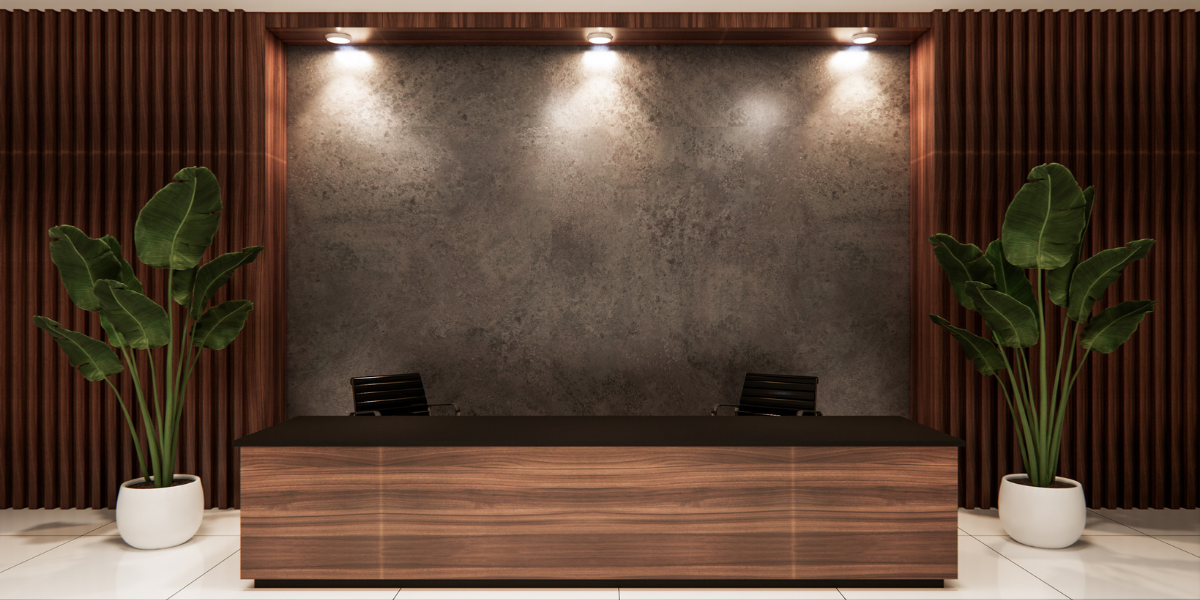Introduction
The reception area of a school is the first point of contact for students, parents, and visitors. It sets the tone for the entire institution, making it essential to create a welcoming, functional, and aesthetically pleasing space. In this article, we’ll guide you through designing the perfect reception furniture for school, ensuring it leaves a lasting positive impression.
Understanding the Purpose Of Reception Furniture For School
First impressions matter. The reception furniture for school, reflects its values and ethos. It should be a space that is not only inviting but also functional, catering to the needs of staff, students, and visitors. Balancing these elements is key to creating an effective reception area.
Assessing the Space
Before purchasing reception furniture for school, it’s crucial to assess the space available. Measure the area to understand the dimensions and layout. Identify key focal points, such as where the reception desk will be placed and where seating should be located. This helps in planning a layout that maximizes the use of space without feeling cluttered.
Choosing the Right Furniture
When selecting furniture for the reception area, durability is paramount. School environments are high-traffic areas, so furniture must withstand constant use. Opt for comfortable seating options, such as cushioned chairs or sofas, to make waiting pleasant for visitors. The reception desk should be functional, with ample storage and space for staff to work efficiently.
Ergonomics and Comfort
Ergonomics plays a significant role in the comfort and health of staff and visitors. Ensure that desks and chairs are ergonomically designed to prevent strain and injury. Comfortable furniture promotes a positive atmosphere, making the reception area more inviting and efficient.
Aesthetic Appeal
The reception furniture for school should align with the school’s branding and overall aesthetic. Choose a color scheme that reflects the school’s colors and themes. Personal touches, like artwork or school achievements, can add a unique and welcoming feel to the space.
Incorporating Technology
Modern reception areas benefit from tech-friendly furniture. Consider installing charging stations and outlets for visitors’ convenience. Interactive displays can provide information about the school, upcoming events, and important announcements, enhancing the overall experience.
Storage Solutions
Efficient storage is essential to keep the reception area organized. Invest in practical storage options, such as cabinets and shelves, to store paperwork, supplies, and personal items. A clutter-free environment looks professional and is easier to maintain
Creating a Welcoming Atmosphere
Lighting is crucial in setting the right mood. Natural light is ideal, but well-placed artificial lighting can also create a warm and welcoming atmosphere. Adding greenery, like potted plants, and decor can make the space feel more inviting. Friendly signage and information boards guide visitors and provide essential information
Budget Considerations
Budgeting is an integral part of the planning process. Set a realistic budget that balances quality and cost. While it’s tempting to cut costs, investing in durable, high-quality furniture can save money in the long run. Look for affordable options that don’t compromise on durability and comfort.
Custom vs. Ready-Made Furniture
Deciding between custom and ready-made furniture depends on your specific needs and budget. Custom furniture can be tailored to fit the space perfectly and match the school’s branding, but it might be more expensive. Ready-made furniture offers a wide range of options and can be more budget-friendly, but may not always meet specific requirements.
Safety and Accessibility
Ensuring the reception area is safe and accessible for everyone is crucial. Make sure the space meets safety standards and is child-friendly. Accessibility features, such as ramps and wide doorways, ensure that all visitors, including those with disabilities, can easily access the area.
Sustainable Choices
Sustainability is increasingly important in today’s world. Opt for eco-friendly materials and sustainable manufacturing processes when choosing furniture. Not only does this benefit the environment, but it also reflects the school’s commitment to sustainability.
Engaging with Stakeholders
Involving staff and students in the design process can lead to a more functional and welcoming reception area. Gather feedback and suggestions to ensure the space meets everyone’s needs. This collaborative approach fosters a sense of ownership and pride in the final result.
Conclusion
Designing a reception furniture for school involves careful planning and consideration of various factors. By focusing on functionality, comfort, aesthetics, and sustainability, you can create a space that reflects the school’s values and provides a positive experience for all who enter. Remember, a well-designed reception area leaves a lasting impression and sets the tone for the entire school
FAQs
Q1. How can we ensure the reception area is welcoming?
A1. To ensure the reception area is welcoming, focus on comfortable seating, good lighting, and friendly decor. Adding personal touches, such as artwork and plants, can also create a warm atmosphere.
Q2. What are the best materials for school furniture?
A2. Durable materials like metal, solid wood, and high-quality laminates are ideal for school furniture. These materials withstand heavy use and are easy to maintain.
Q3. How much should we budget for reception area furniture?
A3. Budgeting for reception area furniture depends on the size of the space and the quality of the furniture. It’s essential to balance quality and cost, investing in durable pieces that will last.
Q4. What are some innovative furniture ideas for school receptions?
A4. Innovative ideas include modular furniture, which can be rearranged as needed, and tech-friendly pieces with built-in charging stations and interactive displays.
Q5. How can we incorporate technology into the reception area?
A5. Incorporate technology by installing interactive displays for information, providing charging stations, and choosing furniture with built-in tech features to enhance the visitor experience.


